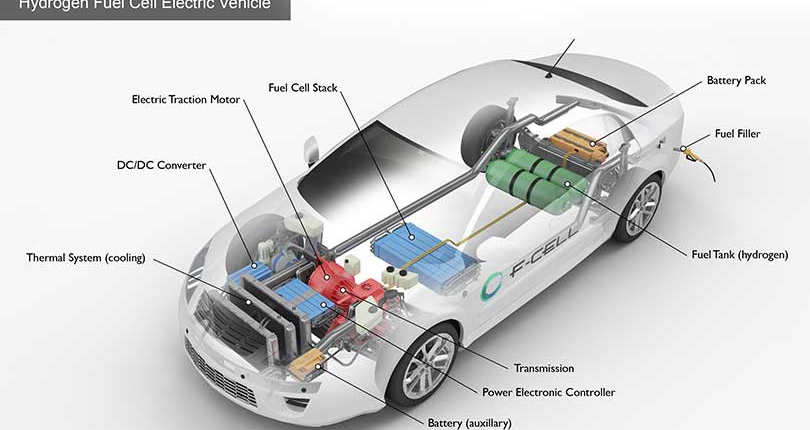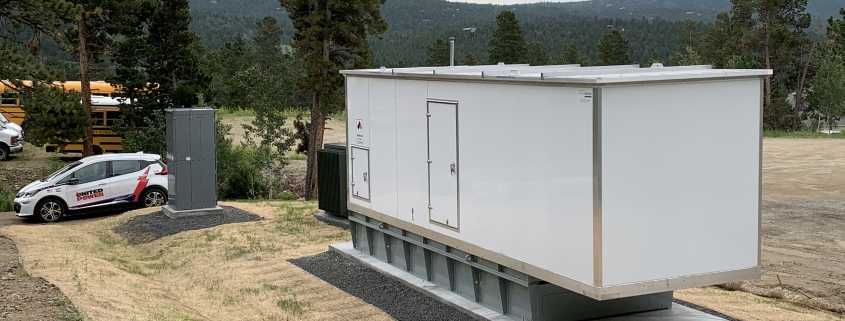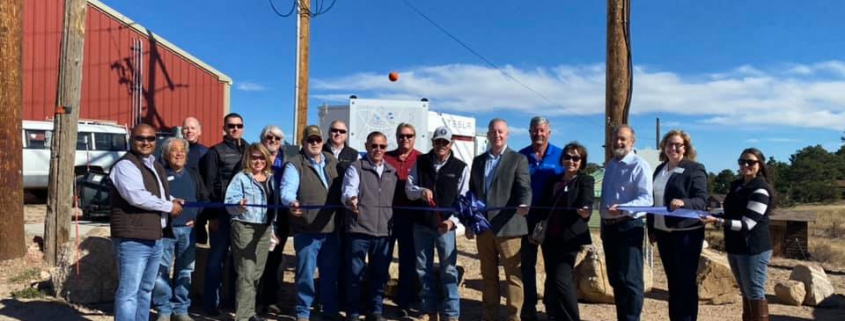Fueling for the Future
Researchers find potential in two low-carbon options
By Maria Kenevsky and Mona Neeley
When it’s time to fuel up your vehicle, you’re likely heading to the gas station or an electric vehicle charging station like most drivers in the U.S. But those might not be the only options in the future.
Research continues into alternative vehicle fuels, including hydrogen and biodiesel. This shift away from gasoline-powered vehicles comes with several benefits, including improving the country’s energy security and lowering vehicle emissions.
Hydrogen as fuel
One of the alternative ways to power a vehicle is with hydrogen in the form of a fuel cell. This form of fuel is potentially emissions-free and can be produced using domestic resources, according to a panel discussion at CREA’s October Energy Innovation Summit.
Just as with all-electric vehicles, fuel cell vehicles use electricity to power an electric motor. However, they use a fuel cell powered by hydrogen to create an electrochemical process to produce electricity. The hydrogen goes through an electrochemical process to produce the electricity, which then powers your car.
 The only byproducts of this process are water and heat, emitted in the form of water vapor and warm air. Since the byproducts are clean, vehicles powered by hydrogen fuel cells produce no tailpipe emissions and are classified as zero-emissions vehicles.
The only byproducts of this process are water and heat, emitted in the form of water vapor and warm air. Since the byproducts are clean, vehicles powered by hydrogen fuel cells produce no tailpipe emissions and are classified as zero-emissions vehicles.
Extracting the hydrogen itself can be a carbon-free process, depending on the way it’s done. One way is to perform electrolysis is using water to extract hydrogen, which requires power from another energy source. Using renewable energy, such as solar or wind energy, to power electrolysis provides a carbon-free process to extract the hydrogen. (There are other hydrogen sources that are less sustainable, such as producing it from natural gas, which emits carbon dioxide as a byproduct.)
Advantages of hydrogen-powered vehicles include fast fueling, long cold-weather range and high cargo capacity. With hydrogen, drivers can refuel a vehicle in under five minutes and gain more than 300 miles of driving range.
However, there are currently only a limited number of hydrogen refueling stations in the U.S., and most of these stations are in California. Colorado’s lone public hydrogen fuel station was installed at Colorado State University in Fort Collins in 2020. It is maintained by the CSU Energy Institute at the Powerhouse Energy Campus on North College Avenue.
It generates hydrogen on-site and is used to train students in hydrogen technology and by researchers gathering cost and operational data as they work toward future hydrogen station deployment for commercial operators in Colorado.
Biofuel/Biodiesel
Another form of alternative vehicle fuel is biofuel. Renewable biofuels are produced from biomass, which can be used in conventional gasoline- or diesel-powered vehicles. These fuels work in the same way gasoline or diesel does by fueling compression-ignition engines. Almost all diesel vehicles are capable of running on biodiesel blends, although vehicle owners should check their OEM engine warranty to ensure that higher-level blends of this alternative fuel are approved by the manufacturer.
One of the most common biofuels is ethanol, which is produced from sugars in corn or other grains, like sugar cane, sugar beets or rice. Sometimes biofuels can be blended with gasoline or diesel, or they can simply be used in pure form. Almost all gasoline sold in the United States includes 10% ethanol blended into the fuel, mostly from distilled corn. Scientists are currently working to find new ways to expand ethanol production by experimenting with different plants.
 Biodiesel, a different form of biofuel, can be produced from vegetable oil, animal fats or recycled cooking grease, and can be used to power older cars that run on diesel. Since biodiesel is nontoxic and biodegradable, it is much safer than petroleum diesel if it’s released into the environment.
Biodiesel, a different form of biofuel, can be produced from vegetable oil, animal fats or recycled cooking grease, and can be used to power older cars that run on diesel. Since biodiesel is nontoxic and biodegradable, it is much safer than petroleum diesel if it’s released into the environment.
The most common sources for biodiesel production in the U.S. are soybean oil, corn oil and recycled feedstocks. There are several other nonmainstream biodiesel sources that can be manufactured from algae, municipal waste and wood chips. However, these options are much less common. The most common biodiesel blend is B20, which ranges from 6% to 20% biodiesel blended with petroleum diesel.
These alternative vehicle fuel options may not be mainstream yet, but as they come on line they can help lower our reliance on gasoline and diesel. As a bonus, these clean-burning options help to improve air quality and lower greenhouse gas emissions from the transportation sector.
There is great potential to see these alternative fuels expand over the years, and additional research efforts may help these fuels reach more individual consumers nationwide.
Maria Kanevsky writes on consumer and cooperative affairs for the National Rural Electric Cooperative Association. Mona Neeley is the editor of Colorado Country Life magazine.





